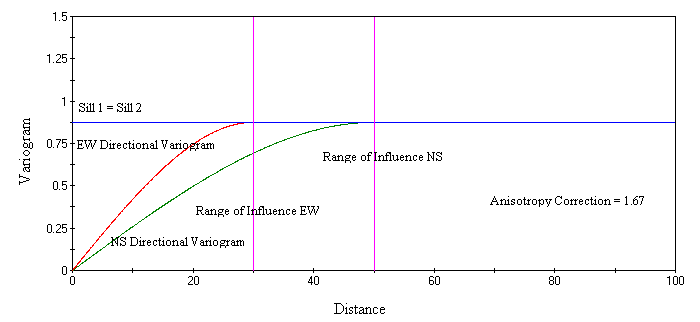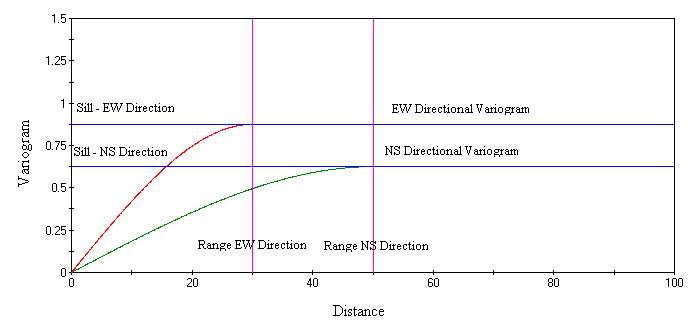Geostatistical Modelling
Anisotropies - 2
Anisotropies, as briefly discussed previously, define the degree of dissimilarity of mineralisation trends in various directions. There are two types of anisotropies:
-
Geometrical anisotropy (affine anisotropy)
A semi-variogram has a geometric anisotropy when the anisotropy can be reduced to isotropy by a simple linear transformation of coordinates. (Fig. 14). -
Figure 14 - Geometrical Anisotropy

-
Zonal anisotropy (stratified anisotropy)
This type of anisotropy cannot be characterised by a linear coordinate transformation. A simple example of this would be of some bedded deposits displaying preferential directions of mineralisation. Where lower sill values will be observed with a main direction of mineralisation (that is, along the beds), and a much higher sill in the direction normal to the beds (Fig. 15). Zonal anisotropy correction can often be performed by breaking down structures of one or both directions into smaller nested structures and reducing the problem to a simple geometrical anisotropy. -
Figure 15 - Combined Geometrical and Zonal Anisotropies


